Search Result
Results for "
colorimetric
" in MedChemExpress (MCE) Product Catalog:
10
Biochemical Assay Reagents
1
Isotope-Labeled Compounds
| Cat. No. |
Product Name |
Target |
Research Areas |
Chemical Structure |
-
- HY-101263
-
-
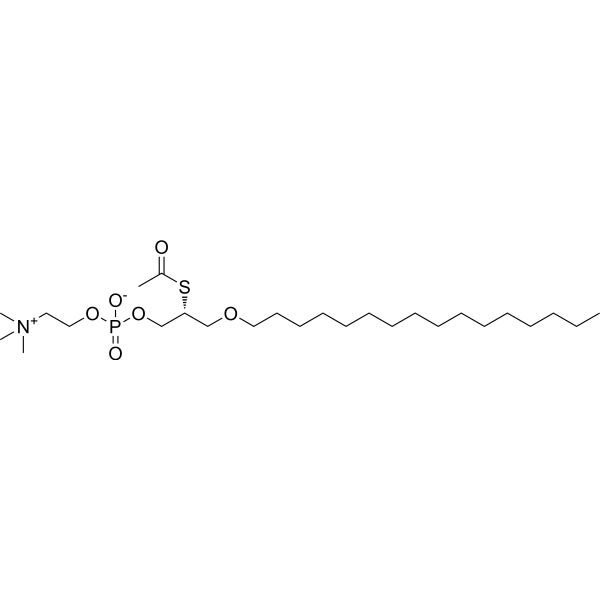
-
- HY-W009694
-
|
|
Biochemical Assay Reagents
|
Others
|
|
3,5-Dinitrosalicylic acid the derivative of salicylic acid. 3,5-Dinitrosalicylic acid is used in the α-amylase assay, carbohydrase assay, and for the colorimetric determination of reducing substances .
|
-

-
- HY-126785
-
|
colorimetric Elastase Substrate
|
Elastase
|
Others
|
|
Suc-AAP-Abu-pNA (Colorimetric Elastase Substrate) is a specific substrate for pancreatic elastase (Km = 100 μM; Kcat/Km = 35,300 s -1 M -1 for rat pancreatic elastase; Km = 30 μM; Kcat/Km = 351,000 s -1 M -1 for porcine pancreatic elastase). Suc-AAP-Abu-pNA also promotes OPC migration .
|
-
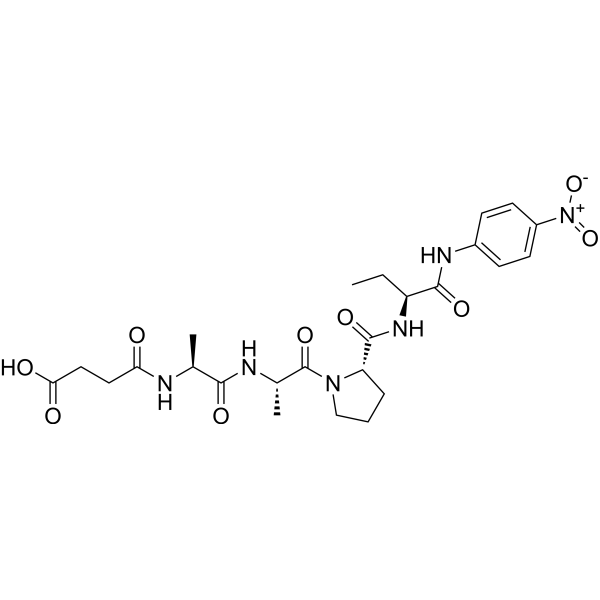
-
- HY-121549
-
|
4-Nitrophenyl-2S,3S-epoxy-3 phenylpropyl carbonate
|
Epoxide Hydrolase
|
Others
|
|
S-NEPC (4-Nitrophenyl-2S,3S-epoxy-3 phenylpropyl carbonate) is a colorimetric substrate used to measure epoxide hydrolase activity .
|
-
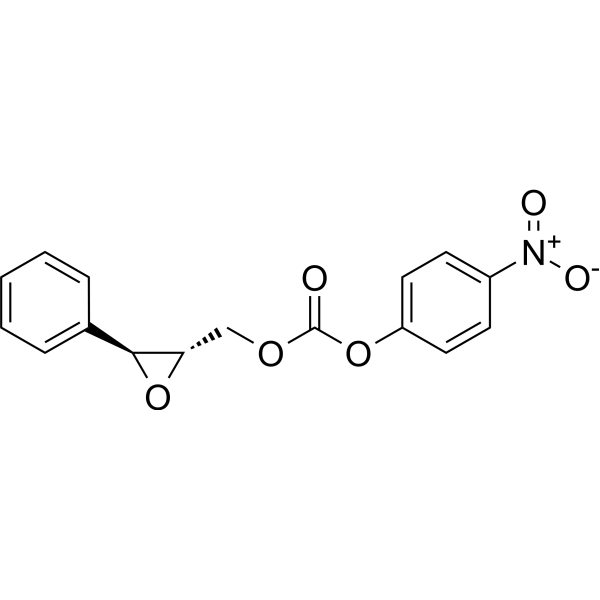
-
- HY-107864
-
|
Tetraiodofluorescein
|
Fluorescent Dye
|
Infection
|
|
Erythrosine B free acid is a visibly red dye with colorimetric and fluorescent properties that serves as an important dye for many Gram-positive and -negative bacteria. Erythrosine B free acid can be used for live/dead determination in both colorimetric and fluorescence-based assays for low, medium and high-throughput experimentation .
|
-

-
- HY-D1599
-
|
R6GH
|
Fluorescent Dye
|
Others
|
|
Rhodamine 6G hydrazide (R6GH) is a fluorescent dye. Rhodamine 6G hydrazide can be used in selective colorimetric and fluorescent sensing .
|
-
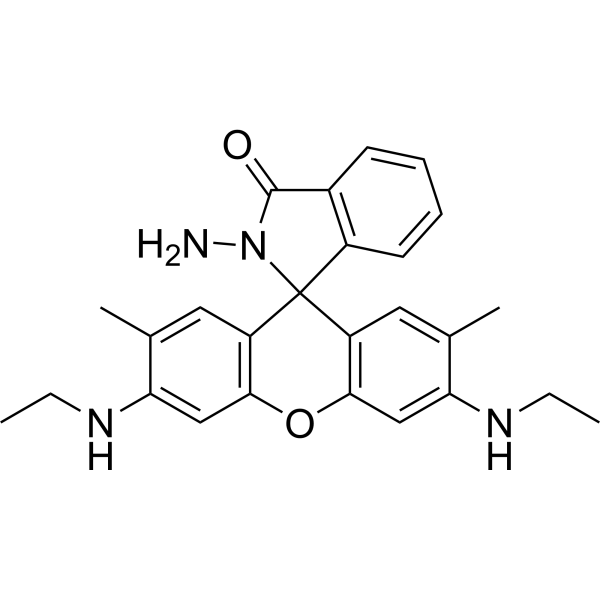
-
- HY-151644
-
|
|
Fluorescent Dye
|
Others
|
|
Fluorescein hydrazide is a colorimetric probe formed by the reaction of dihydrazine adipate with fluorescein isothiocyanate. Fluorescein hydrazide can be used to label aldehyde and ketone groups .
|
-
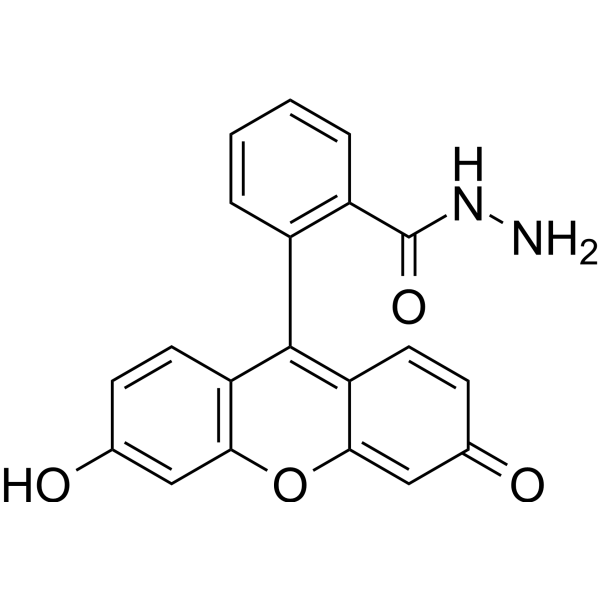
-
- HY-134354
-
|
ADP-ribose-pNP
|
Poly(ADP-ribose) Glycohydrolase (PARG)
|
Others
|
|
pNP-ADPr is a colorimetric substrate that used for the first continuous Poly(ADP-ribose) glycohydrolase (PARG) and ADP-ribosyl hydrolase 3 (ARH3) activity assays. pNP-ADPr can be used for the research of poly(ADP-ribose)polymerase (PARP) enzymes .
|
-
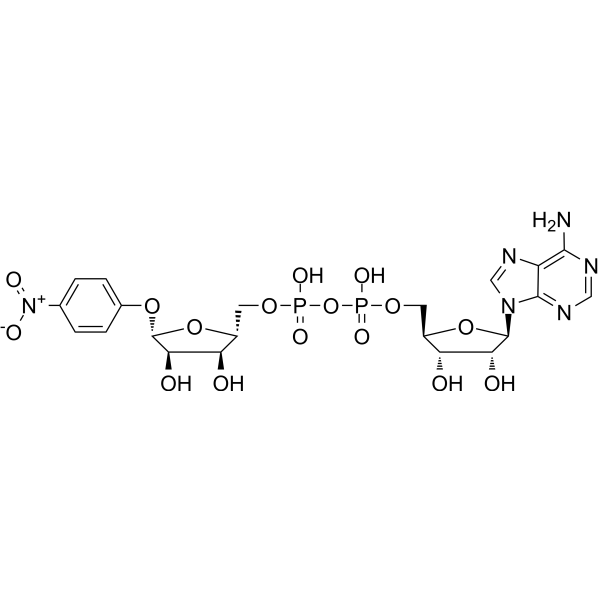
-
- HY-W142631
-
|
|
Fluorescent Dye
|
Cancer
|
|
4-(Phenylazo)diphenylamine is an excellent colorimetric indicator for the accurate determination of the concentration for a variety of strong bases, Lewis acids, and hydride reducing agents .
|
-
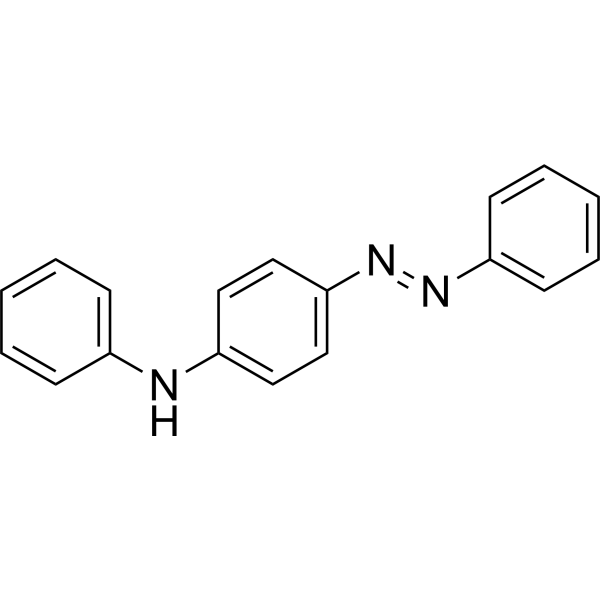
-
- HY-D1224
-
|
|
Fluorescent Dye
|
Others
|
|
Chlorophenol red-β-D-galactopyranoside is a long-wavelength dye, which has been widely used for colorimetric assays. Chlorophenol red-β-D-galactopyranoside is also a β-galactosidase substrate commonly used in recombinant yeast oestrogenic assays .
|
-
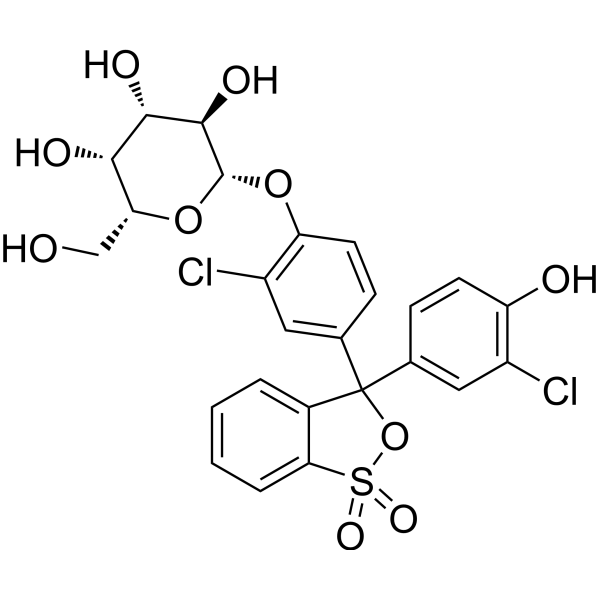
-
- HY-D0943
-
|
Kernechtrot
|
Fluorescent Dye
|
Others
|
|
Nuclear Fast Red, an anthraquinone dye, is commonly used in conjunction with an excess of aluminum ions as a red nuclear counterstain. Nuclear fast red has been used as a histochemical and colorimetric reagent for calcium . Nuclear fast red as highly sensitive "off/on" fluorescent probe for detecting guanine .
|
-
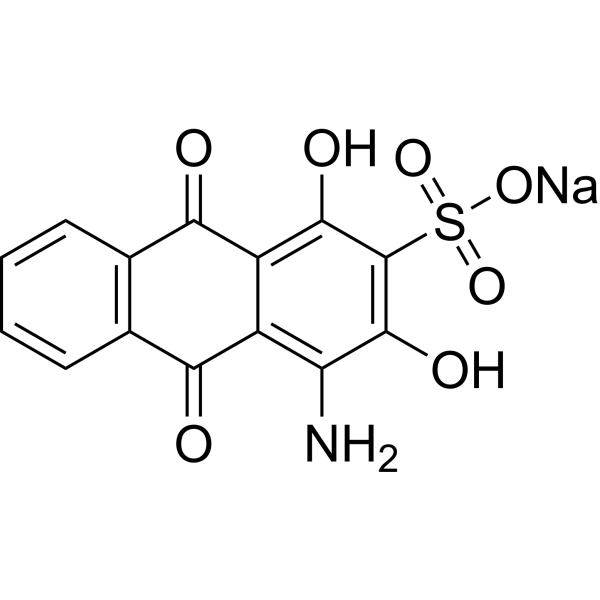
-
- HY-121694
-
|
|
Others
|
Infection
|
|
CENTA is a colorimetric cephalosporin substrate for β-lactamases. Upon hydrolysis by β-lacatamases, CENTA turns from light yellow to chrome yellow, which can be quantified by colorimetric detection at 405 nm as a measure of β-lactamase activity.
|
-

-
- HY-15920
-
INT
2 Publications Verification
Iodonitrotetrazolium chloride; p-Iodonitrotetrazolium Violet
|
Biochemical Assay Reagents
|
Others
|
|
INT(Iodonitrotetrazolium chloride) is used in various dehydrogenase colorimetric analysis of the electron acceptor.
|
-
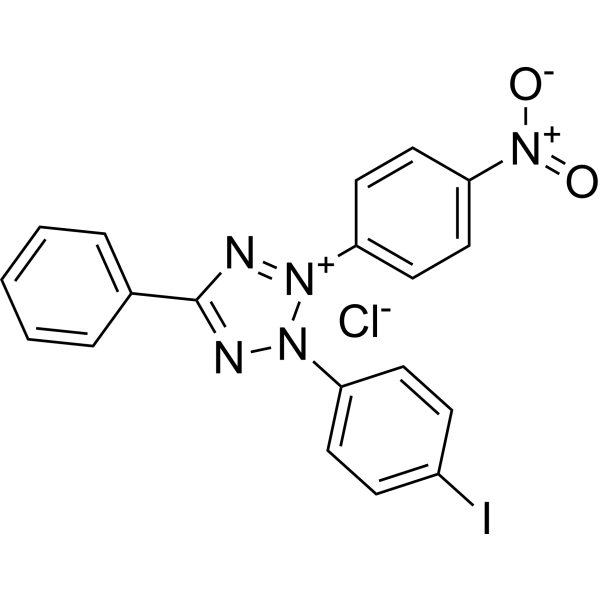
-
- HY-15926
-
ONPG
4 Publications Verification
2-Nitrophenyl β-D-galactopyranoside
|
Biochemical Assay Reagents
|
Others
|
|
ONPG is a colorimetric and spectrophotometric substrate for detection of β-galactosidase activity.
|
-
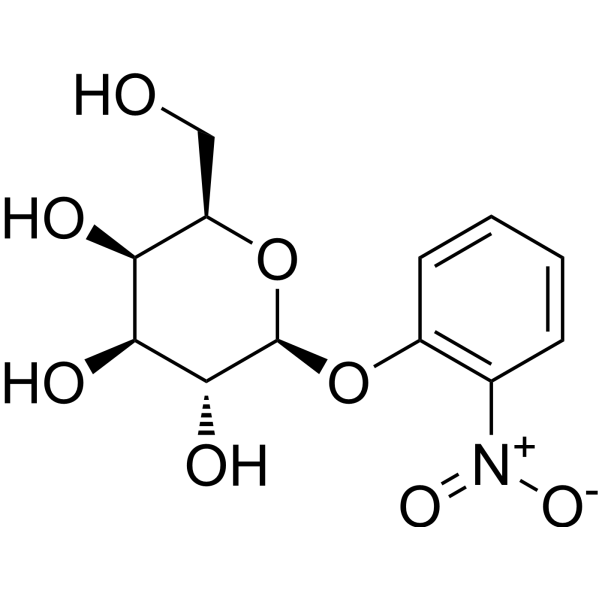
-
- HY-D0108
-
|
|
Fluorescent Dye
|
|
|
Fluorescein dilaurate is a colorimetric probe formed by the reaction of adipic acid dihydrazide and fluorescein isothiocyanate.
|
-
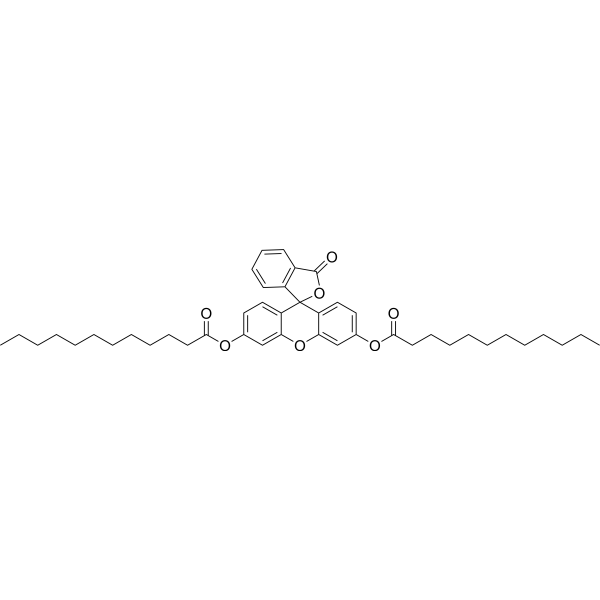
-
- HY-D0107
-
|
|
Fluorescent Dye
|
|
|
Fluorescein dicaproate is a colorimetric probe formed by the reaction of adipic acid dihydrazide and fluorescein isothiocyanate.
|
-
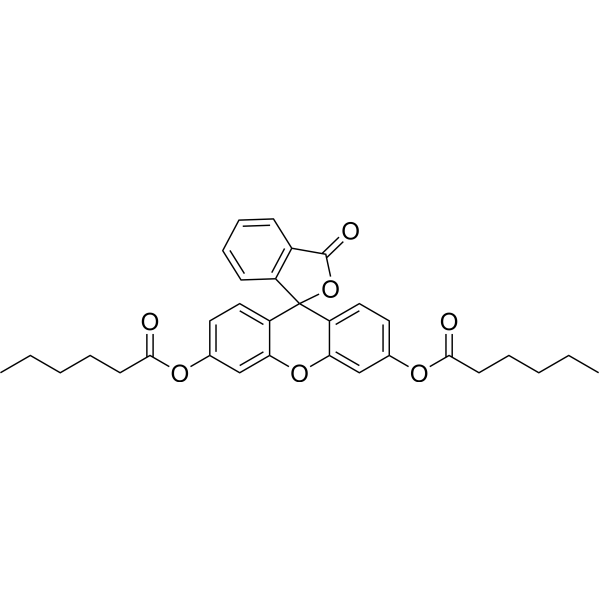
-
- HY-D0101
-
|
|
Fluorescent Dye
|
|
|
Fluorescein-diphosphat (diammonium) is a colorimetric probe formed by the reaction of adipic acid dihydrazide and fluorescein isothiocyanate.
|
-
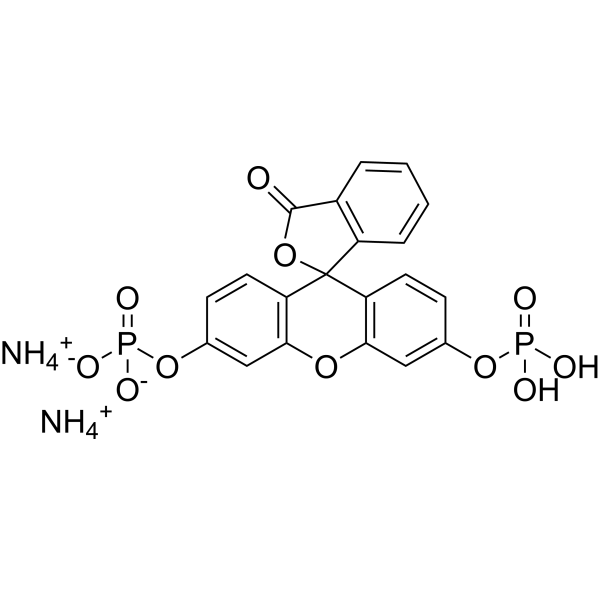
-
- HY-D0105
-
|
|
Fluorescent Dye
|
|
|
Fluorescein diacetate 6-isothiocyanate is a colorimetric probe formed by the reaction of adipic acid dihydrazide and fluorescein isothiocyanate.
|
-
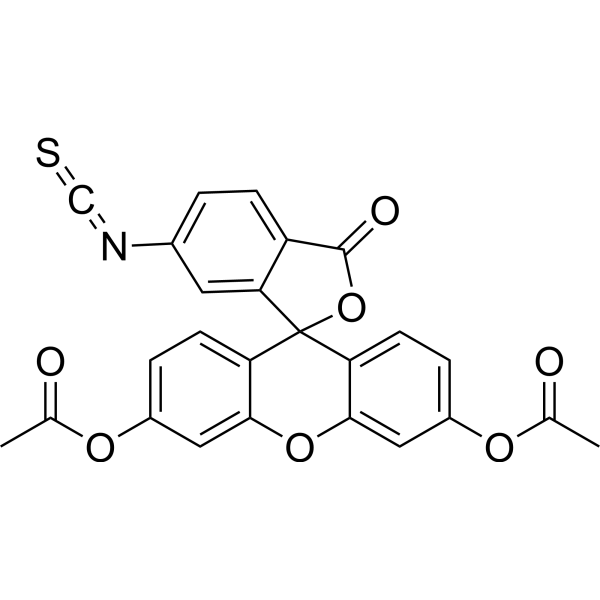
-
- HY-D0103
-
|
|
Fluorescent Dye
|
|
|
Fluorescein diacetate 5-maleimide is a colorimetric probe formed by the reaction of adipic acid dihydrazide and fluorescein isothiocyanate.
|
-
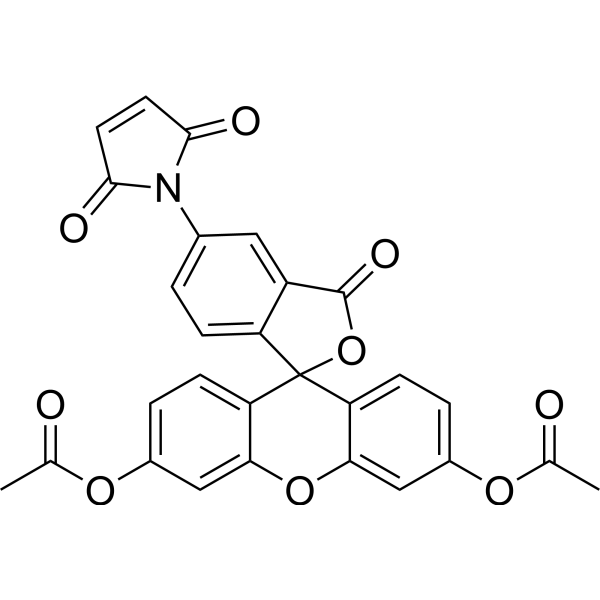
-
- HY-P1006
-
|
|
Caspase
|
Others
|
|
Ac-DEVD-pNA is a colorimetric substrate for caspase-3 (CPP32) and related cysteine proteases.
|
-
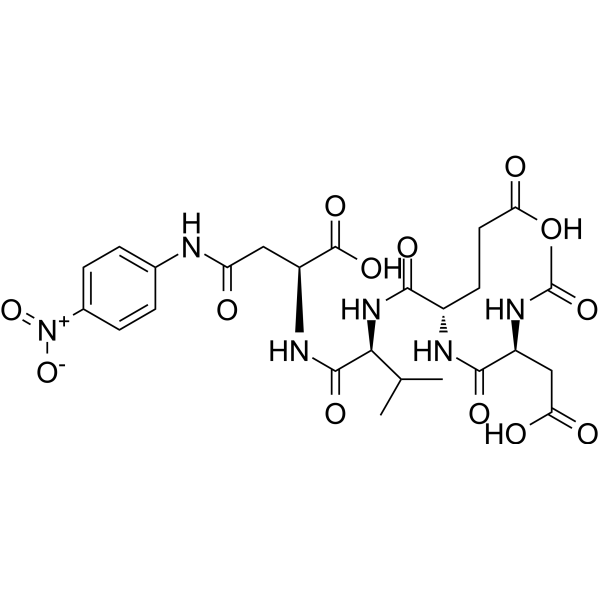
-
- HY-D0100
-
|
|
Fluorescent Dye
|
|
|
Fluorescein-diacetate-5-isothiocyanat is a colorimetric probe formed by the reaction of adipic acid dihydrazide and fluorescein isothiocyanate.
|
-
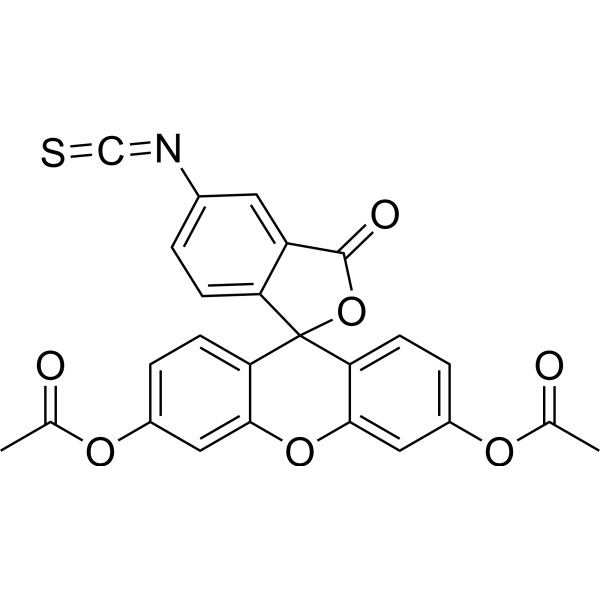
-
- HY-D2329
-
|
|
Fluorescent Dye
|
|
|
Fluorescein-PEG4-NHS ester is a colorimetric probe formed by the reaction of adipic acid dihydrazide and fluorescein isothiocyanate.
|
-
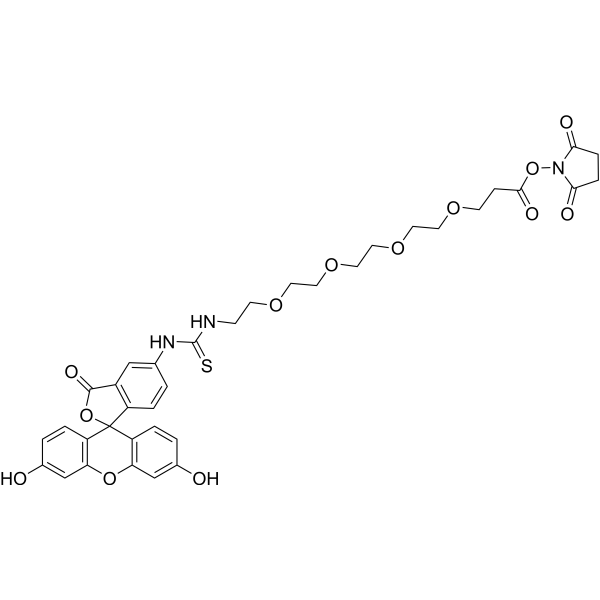
-
- HY-D0073
-
|
|
Fluorescent Dye
|
Others
|
|
2,3 Diaminonaphthalene is a highly selective colorimetric and fluorometric reagent for selenium detection and also used for the fluorometric determination of nitrite.
|
-
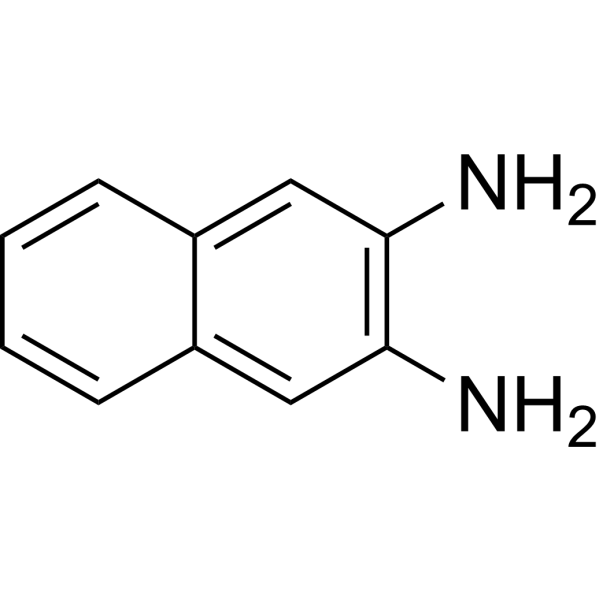
-
- HY-P10236
-
|
|
Caspase
|
Others
|
|
Ac-WEHD-pNA is a colorimetric substrate for caspase 1, 4, 5 and 14, which is utilized to measure the caspase activity .
|
-

-
- HY-15909
-
|
BCIP p-toluidine salt; X-phosphate p-toluidine salt
|
Fluorescent Dye
|
Others
|
|
BCIP(BCIP p-toluidine salt; X-phosphate p-toluidine salt) is an artificial chromogenic substrate used for the sensitive colorimetric detection of alkaline phosphatase activity.
|
-
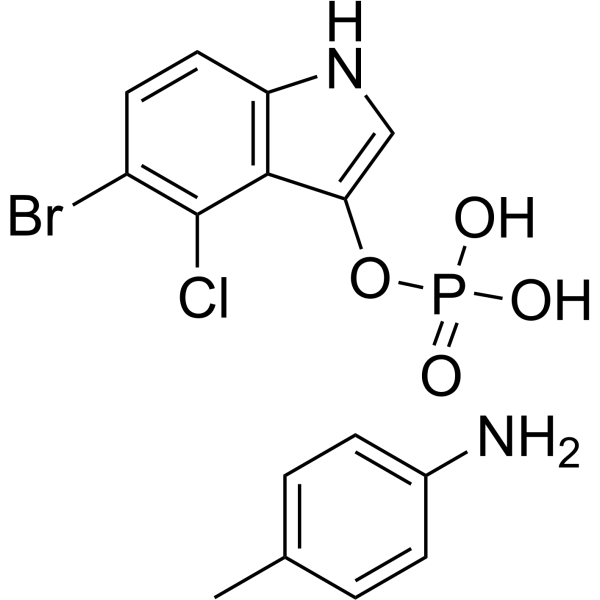
-
- HY-15926S
-
|
2-Nitrophenyl β-D-galactopyranoside-13C
|
Isotope-Labeled Compounds
|
Others
|
|
ONPG- 13C is the 13C labeled ONPG. ONPG is a colorimetric and spectrophotometric substrate for detection of β-galactosidase activit[1][2].
|
-
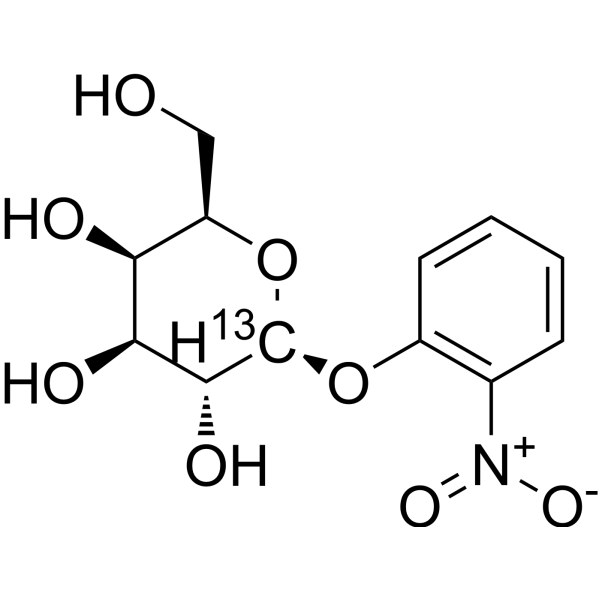
-
- HY-D0813
-
|
|
Fluorescent Dye
|
Others
|
|
Zincon sodium is an excellent colorimetric reagent for the detection of zinc and copper ions in aqueous solution. Zincon sodium can be used for the determination of zinc, copper, and cobalt ions in metalloproteins .
|
-
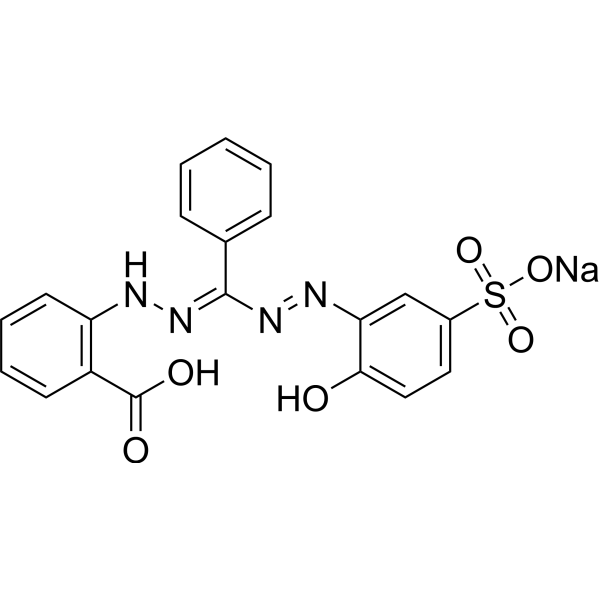
-
- HY-P10001
-
|
Z-Ile-Glu-Thr-Asp-pNA
|
Caspase
|
Cancer
|
|
Z-IETD-pNA (Z-Ile-Glu-Thr-Asp-pNA) is a colorimetric caspase-8 and granzyme B substrate. Z-IETD-pNA is hydrlyzed by caspase 8 to generate pNA .
|
-
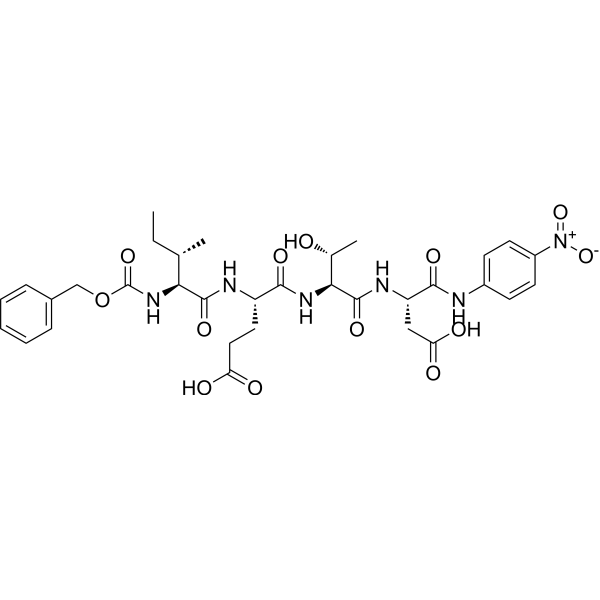
-
- HY-W106746
-
|
Bismuth sodium oxide dihydrate, 85%
|
Biochemical Assay Reagents
|
Others
|
|
Sodium bismuthate dihydrate, 85% (Bismuth sodium oxide dihydrate, 85%) is a sensitive colorimetric reagent for the determination of monoamines. Sodium bismuthate dihydrate, 85% is a kind of biological materials or organic compounds that are widely used in life science research .
|
-

-
- HY-W094505
-
|
Bismuth sodium oxide, 80%
|
Biochemical Assay Reagents
|
Others
|
|
Sodium bismuthate (NaBiO3), 80% (Bismuth sodium oxide, 80%) is a sensitive colorimetric reagent for the determination of monoamines. Sodium bismuthate (NaBiO3), 80% is a kind of biological materials or organic compounds that are widely used in life science research .
|
-

-
- HY-125815
-
|
|
Fluorescent Dye
|
Others
|
|
Reactive Blue 4 is an anthraquinone dye, as a single colorimetric chemosensor for sequential determination of multiple analytes with different optical responses in aqueous media. Reactive Blue 4 is phytotoxic, cytotoxic and genotoxic. Reactive Blue 4 .
|
-
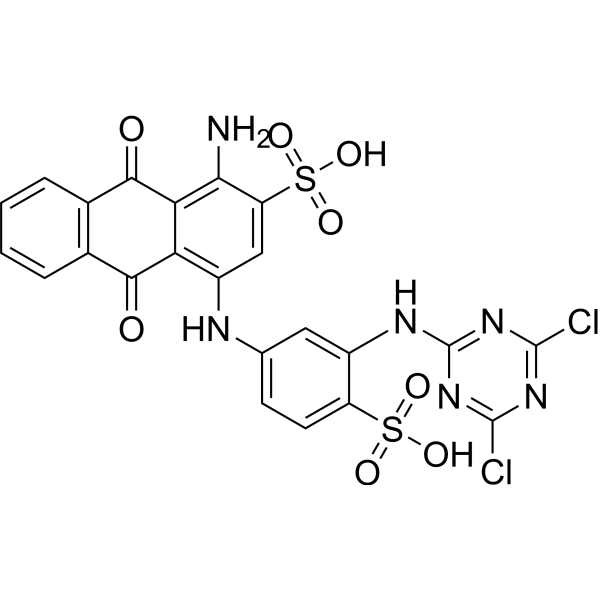
-
- HY-W115738
-
|
|
Biochemical Assay Reagents
|
Others
|
|
PAR is an azo dye widely used as a colorimetric reagent for metal ions. PAR forms stable chelates with different metal ions. PAR can also complex with heavy metal ions in polar organic solvent like ethanol .
|
-
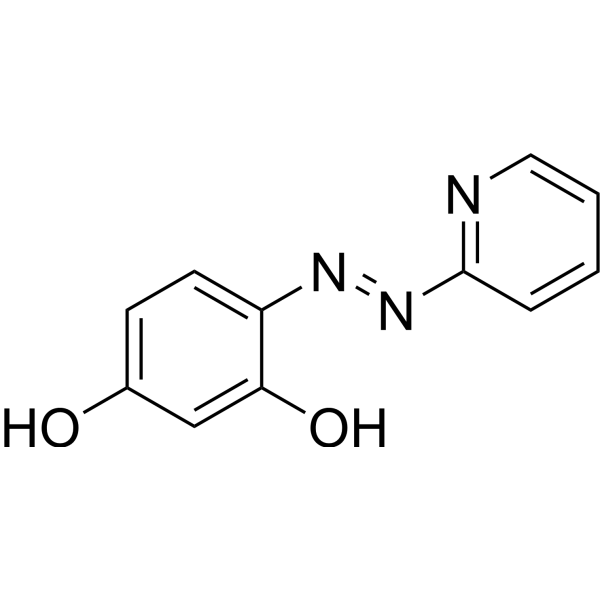
-
- HY-137805
-
|
|
Fluorescent Dye
|
Others
|
|
Ferrozine is a spectrophotometric reagent for iron, can react with divalent Fe to form a stable magenta complex species. The complex has an absorption peak at 562 nm .Ferrozine-based colorimetric assays can quantify iron in cells
|
-
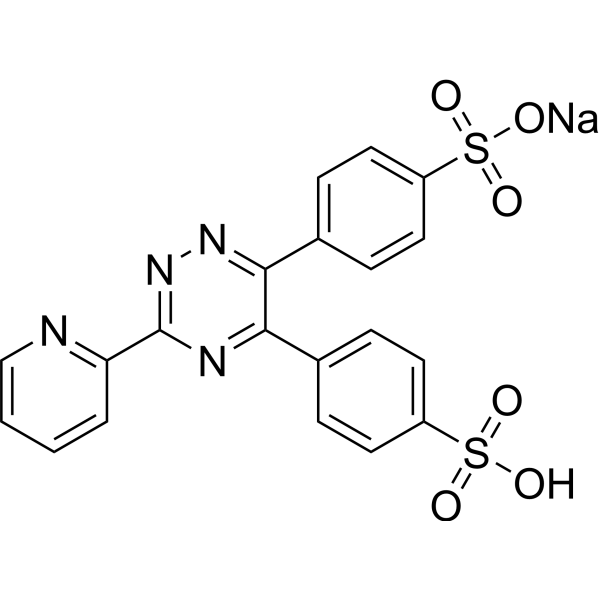
-
- HY-W051140
-
|
Disilver sulfate, 99%
|
Biochemical Assay Reagents
|
Others
|
|
Silver sulfate, 99% (Disilver sulfate, 99%) can be used for colorimetric determination of nitrates, phosphates, and fluoride, or for the determination of chromium and cobalt in water. Silver sulfate, 99% is a kind of biological materials or organic compounds that are widely used in life science research .
|
-

-
- HY-W243303C
-
|
|
Biochemical Assay Reagents
|
Others
|
|
Silver sulfate, 99% (Disilver sulfate, 99%) can be used for the colorimetric determination of nitrates, phosphates, and fluoride, or for the determination of chromium and cobalt in water quality analysis. Poly(acrylic acid) (MW 4000000) is a kind of biological materials or organic compounds that are widely used in life science research .
|
-

-
- HY-120833
-
|
|
Caspase
|
Others
|
|
Ac-Ile-Glu-Thr-Asp-pNA is a substrate for caspase-8. Caspase-8 binds to and cleaves the Ile-Glu-Thr-Asp (IETD) peptide sequence to release p-nitroalinide, which can be quantified by colorimetric detection at 405 nm as a measure of enzyme activity .
|
-
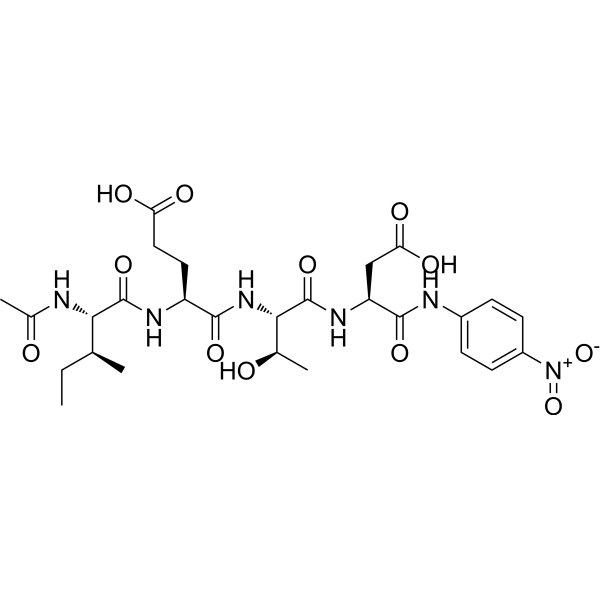
-
- HY-W151206
-
|
|
Fluorescent Dye
|
Others
|
|
Hydroxy naphthol blue disodium, an azo dye, is a metal indicator for calcium and a colorimetric reagent for alkaline earth metal ions ( λmax = 650 nm). In the pH range between 12 and 13, the solution of the indicator is reddish pink in the presence of calcium ion and to deep blue in the presence of disodium EDTA .
|
-
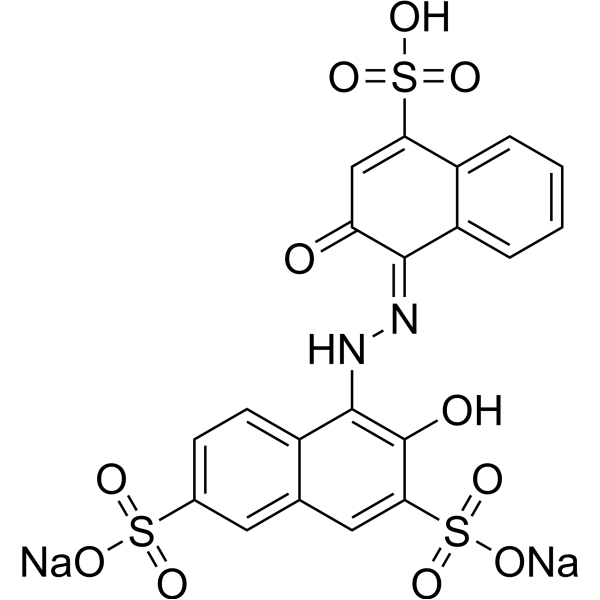
-
- HY-134354A
-
|
ADP-ribose-pNP disodium
|
Poly(ADP-ribose) Glycohydrolase (PARG)
|
Others
|
|
pNP-ADPr disodium is a colorimetric substrate that used for the first continuous Poly(ADP-ribose) glycohydrolase (PARG) and ADP-ribosyl hydrolase 3 (ARH3) activity assays. pNP-ADPr disodium can be used for the research of poly(ADP-ribose)polymerase (PARP) enzymes .
|
-
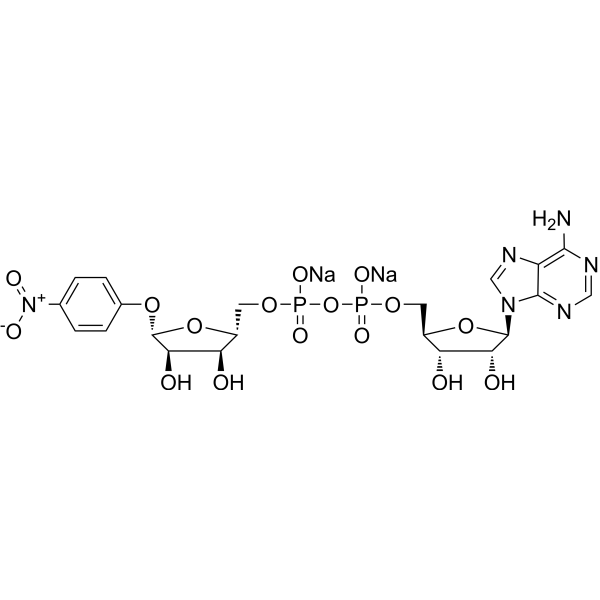
-
- HY-15924
-
Thiazolyl Blue
Maximum Cited Publications
105 Publications Verification
MTT; Thiazolyl Blue Tetrazolium bromide; Methylthiazolyldiphenyl-tetrazolium bromide
|
Fluorescent Dye
|
Others
|
|
Thiazolyl Blue (MTT) is a cell-permeable and positively charged tetrazolium dye that is used to detect reductive metabolism in cells. Thiazolyl Blue is taken up by cells through the plasma membrane and then reduced to formazan by intracellular NAD (P) H-oxidoreductases. Thiazolyl Blue is frequently used in colorimetric assays to measure cell proliferation, cytotoxicity, and apoptosis .
|
-
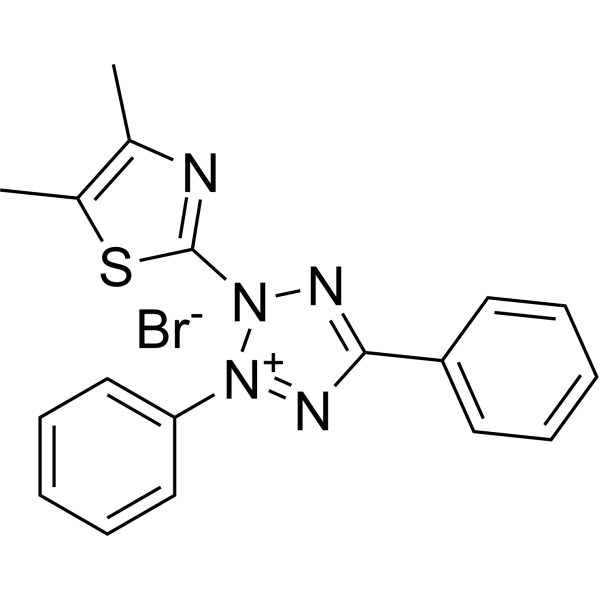
-
- HY-W127790
-
|
|
Biochemical Assay Reagents
|
Others
|
|
Bathophenanthrolinedisulfonic acid disodium salt is used as a colorimetric reagent for the detection of iron. It is widely used for the determination of iron in aqueous solutions without the use of extraction solvents. It is used as a precursor for the preparation of the anion Europium(III) disulfonated bathophenanthroline tris(dibenzoylformic acid) complex and ruthenium II tris(rubphenanthroline disulfonate). It plays a crucial role in the catalytic oxidation of 2-hexanol by enabling it to form a water-soluble complex with palladium.
|
-
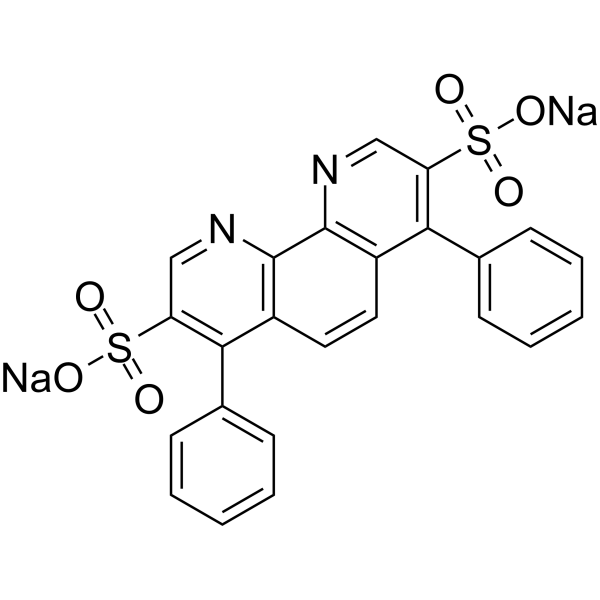
-
- HY-W115718
-
|
|
Dopamine β-hydroxylase
|
Neurological Disease
|
|
Cuprizone is a copper chelating agent that forms a deep blue copper ketone complex with copper (II). The copper ketone reaction can be used in colorimetric tests for the presence of trace copper. Cuprizone can be used to induce some schizophrenia-like behavior in mice. Cuprizone acts on copper enzymes, including SOD1, cytochrome oxidase, and DβH, thereby causing oxidative stress and increasing DA levels in certain brain regions such as the medial prefrontal cortex (PFC) .
|
-
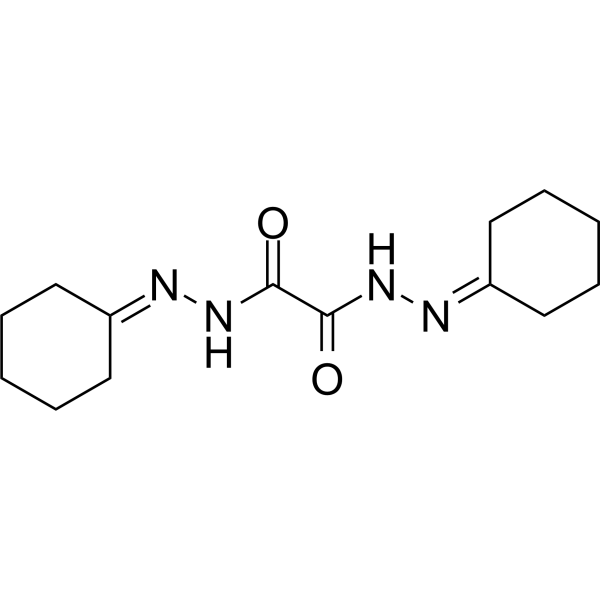
-
- HY-120971
-
|
DepNA
|
Endogenous Metabolite
|
Metabolic Disease
|
|
N-Decanoyl p-nitroaniline (DepNA) is one of several nitroaniline fatty acid amides which can be used to measure fatty acid amide hydrolase (FAAH) activity.1 FAAH is a relatively unselective enzyme in that it accepts a variety of amide head groups other than the ethanolamine of its endogenous substrate anandamide (AEA). It also will hydrolyze fatty acid amides with fewer carbons and fewer double bonds than arachidonate. Exposure of DepNA to FAAH activity results in the release of the yellow colorimetric dye p-nitroaniline (ε=13,500 at 410 nm). This allows the fast and convenient measurement of FAAH activity using a 96 well plate spectrophotometer.
|
-

-
- HY-W034953
-
|
|
Biochemical Assay Reagents
|
Others
|
|
Bathocuproine disulfonate disodium (BCS) is an organic compound used as a highly sensitive colorimetric reagent for copper ions in biochemical and analytical applications. It has a bright yellow color and absorbs light at specific wavelengths, so it can be used to detect and quantify trace copper. In biochemical applications, BCS is commonly used to study the role of copper ions in various biological processes. Copper is an essential nutrient for many organisms, but it can also be toxic in high concentrations, so accurate measurement of copper levels is important to understand its impact on living systems. In terms of analysis, BCS is often used in environmental monitoring and water quality testing to detect copper pollution. It can detect copper even at very low concentrations, making it an invaluable tool for identifying potential sources of pollution and assessing the impact of industrial activities on aquatic ecosystems.
|
-
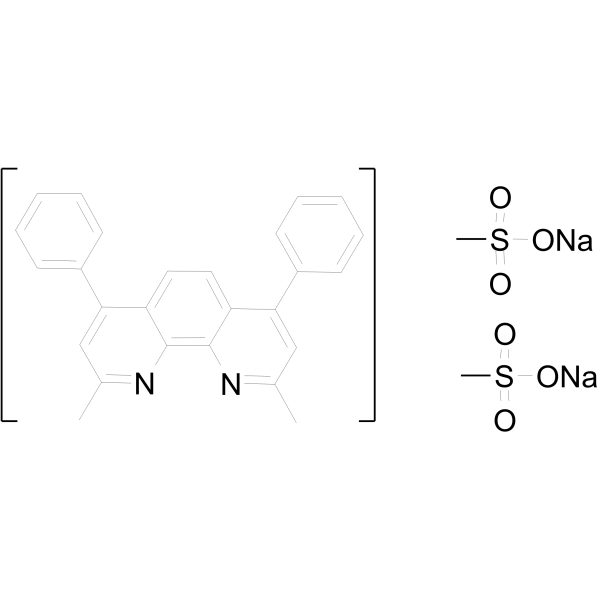
| Cat. No. |
Product Name |
Type |
-
- HY-D1599
-
|
R6GH
|
Fluorescent Dyes/Probes
|
|
Rhodamine 6G hydrazide (R6GH) is a fluorescent dye. Rhodamine 6G hydrazide can be used in selective colorimetric and fluorescent sensing .
|
-
- HY-151644
-
|
|
Fluorescent Dyes/Probes
|
|
Fluorescein hydrazide is a colorimetric probe formed by the reaction of dihydrazine adipate with fluorescein isothiocyanate. Fluorescein hydrazide can be used to label aldehyde and ketone groups .
|
-
- HY-D1224
-
|
|
Dyes
|
|
Chlorophenol red-β-D-galactopyranoside is a long-wavelength dye, which has been widely used for colorimetric assays. Chlorophenol red-β-D-galactopyranoside is also a β-galactosidase substrate commonly used in recombinant yeast oestrogenic assays .
|
-
- HY-107864
-
|
Tetraiodofluorescein
|
Fluorescent Dyes/Probes
|
|
Erythrosine B free acid is a visibly red dye with colorimetric and fluorescent properties that serves as an important dye for many Gram-positive and -negative bacteria. Erythrosine B free acid can be used for live/dead determination in both colorimetric and fluorescence-based assays for low, medium and high-throughput experimentation .
|
-
- HY-W142631
-
|
|
Dyes
|
|
4-(Phenylazo)diphenylamine is an excellent colorimetric indicator for the accurate determination of the concentration for a variety of strong bases, Lewis acids, and hydride reducing agents .
|
-
- HY-D0943
-
|
Kernechtrot
|
Fluorescent Dyes/Probes
|
|
Nuclear Fast Red, an anthraquinone dye, is commonly used in conjunction with an excess of aluminum ions as a red nuclear counterstain. Nuclear fast red has been used as a histochemical and colorimetric reagent for calcium . Nuclear fast red as highly sensitive "off/on" fluorescent probe for detecting guanine .
|
-
- HY-D0108
-
|
|
Fluorescent Dyes/Probes
|
|
Fluorescein dilaurate is a colorimetric probe formed by the reaction of adipic acid dihydrazide and fluorescein isothiocyanate.
|
-
- HY-D0107
-
|
|
Fluorescent Dyes/Probes
|
|
Fluorescein dicaproate is a colorimetric probe formed by the reaction of adipic acid dihydrazide and fluorescein isothiocyanate.
|
-
- HY-D0101
-
|
|
Dyes
|
|
Fluorescein-diphosphat (diammonium) is a colorimetric probe formed by the reaction of adipic acid dihydrazide and fluorescein isothiocyanate.
|
-
- HY-D0105
-
|
|
Dyes
|
|
Fluorescein diacetate 6-isothiocyanate is a colorimetric probe formed by the reaction of adipic acid dihydrazide and fluorescein isothiocyanate.
|
-
- HY-D0103
-
|
|
Fluorescent Dyes/Probes
|
|
Fluorescein diacetate 5-maleimide is a colorimetric probe formed by the reaction of adipic acid dihydrazide and fluorescein isothiocyanate.
|
-
- HY-D0100
-
|
|
Fluorescent Dyes/Probes
|
|
Fluorescein-diacetate-5-isothiocyanat is a colorimetric probe formed by the reaction of adipic acid dihydrazide and fluorescein isothiocyanate.
|
-
- HY-D2329
-
|
|
Fluorescent Dyes/Probes
|
|
Fluorescein-PEG4-NHS ester is a colorimetric probe formed by the reaction of adipic acid dihydrazide and fluorescein isothiocyanate.
|
-
- HY-D0073
-
|
|
Fluorescent Dyes/Probes
|
|
2,3 Diaminonaphthalene is a highly selective colorimetric and fluorometric reagent for selenium detection and also used for the fluorometric determination of nitrite.
|
-
- HY-15909
-
|
BCIP p-toluidine salt; X-phosphate p-toluidine salt
|
Chromogenic Substrates
|
|
BCIP(BCIP p-toluidine salt; X-phosphate p-toluidine salt) is an artificial chromogenic substrate used for the sensitive colorimetric detection of alkaline phosphatase activity.
|
-
- HY-D0813
-
|
|
Fluorescent Dyes/Probes
|
|
Zincon sodium is an excellent colorimetric reagent for the detection of zinc and copper ions in aqueous solution. Zincon sodium can be used for the determination of zinc, copper, and cobalt ions in metalloproteins .
|
-
- HY-125815
-
|
|
Dyes
|
|
Reactive Blue 4 is an anthraquinone dye, as a single colorimetric chemosensor for sequential determination of multiple analytes with different optical responses in aqueous media. Reactive Blue 4 is phytotoxic, cytotoxic and genotoxic. Reactive Blue 4 .
|
-
- HY-137805
-
|
|
Dyes
|
|
Ferrozine is a spectrophotometric reagent for iron, can react with divalent Fe to form a stable magenta complex species. The complex has an absorption peak at 562 nm .Ferrozine-based colorimetric assays can quantify iron in cells
|
-
- HY-15924
-
|
MTT; Thiazolyl Blue Tetrazolium bromide; Methylthiazolyldiphenyl-tetrazolium bromide
|
Chromogenic Substrates
|
|
Thiazolyl Blue (MTT) is a cell-permeable and positively charged tetrazolium dye that is used to detect reductive metabolism in cells. Thiazolyl Blue is taken up by cells through the plasma membrane and then reduced to formazan by intracellular NAD (P) H-oxidoreductases. Thiazolyl Blue is frequently used in colorimetric assays to measure cell proliferation, cytotoxicity, and apoptosis .
|
| Cat. No. |
Product Name |
Type |
-
- HY-W009694
-
|
|
Biochemical Assay Reagents
|
|
3,5-Dinitrosalicylic acid the derivative of salicylic acid. 3,5-Dinitrosalicylic acid is used in the α-amylase assay, carbohydrase assay, and for the colorimetric determination of reducing substances .
|
-
- HY-15920
-
INT
2 Publications Verification
Iodonitrotetrazolium chloride; p-Iodonitrotetrazolium Violet
|
Biochemical Assay Reagents
|
|
INT(Iodonitrotetrazolium chloride) is used in various dehydrogenase colorimetric analysis of the electron acceptor.
|
-
- HY-15926
-
ONPG
4 Publications Verification
2-Nitrophenyl β-D-galactopyranoside
|
Enzyme Substrates
|
|
ONPG is a colorimetric and spectrophotometric substrate for detection of β-galactosidase activity.
|
-
- HY-W106746
-
|
Bismuth sodium oxide dihydrate, 85%
|
Indicators
|
|
Sodium bismuthate dihydrate, 85% (Bismuth sodium oxide dihydrate, 85%) is a sensitive colorimetric reagent for the determination of monoamines. Sodium bismuthate dihydrate, 85% is a kind of biological materials or organic compounds that are widely used in life science research .
|
-
- HY-W094505
-
|
Bismuth sodium oxide, 80%
|
Indicators
|
|
Sodium bismuthate (NaBiO3), 80% (Bismuth sodium oxide, 80%) is a sensitive colorimetric reagent for the determination of monoamines. Sodium bismuthate (NaBiO3), 80% is a kind of biological materials or organic compounds that are widely used in life science research .
|
-
- HY-W051140
-
|
Disilver sulfate, 99%
|
Indicators
|
|
Silver sulfate, 99% (Disilver sulfate, 99%) can be used for colorimetric determination of nitrates, phosphates, and fluoride, or for the determination of chromium and cobalt in water. Silver sulfate, 99% is a kind of biological materials or organic compounds that are widely used in life science research .
|
-
- HY-W243303C
-
|
|
Biochemical Assay Reagents
|
|
Silver sulfate, 99% (Disilver sulfate, 99%) can be used for the colorimetric determination of nitrates, phosphates, and fluoride, or for the determination of chromium and cobalt in water quality analysis. Poly(acrylic acid) (MW 4000000) is a kind of biological materials or organic compounds that are widely used in life science research .
|
-
- HY-W127790
-
|
|
Biochemical Assay Reagents
|
|
Bathophenanthrolinedisulfonic acid disodium salt is used as a colorimetric reagent for the detection of iron. It is widely used for the determination of iron in aqueous solutions without the use of extraction solvents. It is used as a precursor for the preparation of the anion Europium(III) disulfonated bathophenanthroline tris(dibenzoylformic acid) complex and ruthenium II tris(rubphenanthroline disulfonate). It plays a crucial role in the catalytic oxidation of 2-hexanol by enabling it to form a water-soluble complex with palladium.
|
-
- HY-157926
-
|
|
Chelators
|
|
Nitroso-PSAP is a sensitive and specific chromogenic reagent for iron (Fe 2+), which is used for the colorimetric determination of iron in blood after mineralization with periodic acid. TNitroso-PSAP chelates with iron (Fe 2+) to produce a green complex (λmax=756 nm, Epsilon = 4.5 x 10 < sup > 4 < / sup > dm < sup > 3 < / sup > mol < sup > 1 < / sup > cm < sup > 1 < / sup >) .
|
-
- HY-W034953
-
|
|
Biochemical Assay Reagents
|
|
Bathocuproine disulfonate disodium (BCS) is an organic compound used as a highly sensitive colorimetric reagent for copper ions in biochemical and analytical applications. It has a bright yellow color and absorbs light at specific wavelengths, so it can be used to detect and quantify trace copper. In biochemical applications, BCS is commonly used to study the role of copper ions in various biological processes. Copper is an essential nutrient for many organisms, but it can also be toxic in high concentrations, so accurate measurement of copper levels is important to understand its impact on living systems. In terms of analysis, BCS is often used in environmental monitoring and water quality testing to detect copper pollution. It can detect copper even at very low concentrations, making it an invaluable tool for identifying potential sources of pollution and assessing the impact of industrial activities on aquatic ecosystems.
|
| Cat. No. |
Product Name |
Target |
Research Area |
-
- HY-126785
-
|
colorimetric Elastase Substrate
|
Elastase
|
Others
|
|
Suc-AAP-Abu-pNA (Colorimetric Elastase Substrate) is a specific substrate for pancreatic elastase (Km = 100 μM; Kcat/Km = 35,300 s -1 M -1 for rat pancreatic elastase; Km = 30 μM; Kcat/Km = 351,000 s -1 M -1 for porcine pancreatic elastase). Suc-AAP-Abu-pNA also promotes OPC migration .
|
-
- HY-P10143
-
|
|
Peptides
|
Others
|
|
MMP-2/MMP-9 Substrate, a synthetic colorimetric substrate, is a peptide .
|
-
- HY-P10059
-
|
|
Peptides
|
Others
|
|
Boc-Val-Gly-Arg-βNA is a colorimetric substrate for plasminogen activator .
|
-
- HY-P5992
-
|
|
Peptides
|
Others
|
|
Factor VIIa substrate is a colorimetric substrate for Factor VIIa, that can be measured by absorbance at 405 nm .
|
-
- HY-P5348
-
|
|
Peptides
|
Others
|
|
Ac-LEHD-pNA is a biological active peptide. (Caspase-9 substrate; pNA (4-nitroaniline)-derived caspase substrates are widely used for the colorimetric detection of various caspase activities. Cleavage of pNA peptides by caspases generates pNA that is monitored colorimetrically at ~405 nm. pNA has maximum absorption around 408 nm.)
|
-
- HY-P1006
-
|
|
Caspase
|
Others
|
|
Ac-DEVD-pNA is a colorimetric substrate for caspase-3 (CPP32) and related cysteine proteases.
|
-
- HY-P4335
-
|
|
Peptides
|
Others
|
|
Bz-RGFFP-4MβNA, a substrate for Cathepsin D, is suitable for either colorimetric or fluorometric assay .
|
-
- HY-P10236
-
|
|
Caspase
|
Others
|
|
Ac-WEHD-pNA is a colorimetric substrate for caspase 1, 4, 5 and 14, which is utilized to measure the caspase activity .
|
-
- HY-P10001
-
|
Z-Ile-Glu-Thr-Asp-pNA
|
Caspase
|
Cancer
|
|
Z-IETD-pNA (Z-Ile-Glu-Thr-Asp-pNA) is a colorimetric caspase-8 and granzyme B substrate. Z-IETD-pNA is hydrlyzed by caspase 8 to generate pNA .
|
-
- HY-120833
-
|
|
Caspase
|
Others
|
|
Ac-Ile-Glu-Thr-Asp-pNA is a substrate for caspase-8. Caspase-8 binds to and cleaves the Ile-Glu-Thr-Asp (IETD) peptide sequence to release p-nitroalinide, which can be quantified by colorimetric detection at 405 nm as a measure of enzyme activity .
|
-
- HY-K0301
-
|
|
|
Cell Counting Kit-8 (CCK-8) allows sensitive colorimetric assays for the determination of cell viability in cell proliferation and cytotoxicity assays.
|
-
- HY-K1501
-
|
|
|
MCE NADP+/NADPH Assay Kit (WST-8) is a colorimetric assay that conveniently detects the oxidized (NADP+) and reduced (NADPH) forms of coenzyme Ⅱ within cells, tissues, and other samples.
|
-
- HY-K0313
-
|
|
|
MCE NAD+/NADH Assay Kit (WST-8) is a colorimetric assay that conveniently detects the oxidized (NAD+) and reduced (NADH) forms of coenzyme Ⅰ within cells, tissues, and other samples.
|
| Cat. No. |
Product Name |
Chemical Structure |
-
- HY-15926S
-
|
|
|
ONPG- 13C is the 13C labeled ONPG. ONPG is a colorimetric and spectrophotometric substrate for detection of β-galactosidase activit[1][2].
|
-

Your information is safe with us. * Required Fields.
Inquiry Information
- Product Name:
- Cat. No.:
- Quantity:
- MCE Japan Authorized Agent:




















































